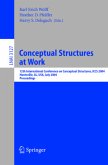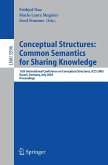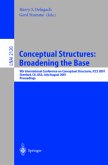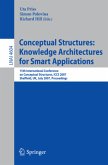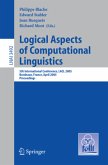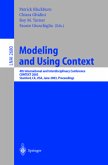This volume contains the proceedings of ICCS 2003, the 11th International C- ferenceonConceptualStructures. Thisconferenceseriescontinuestobethemain forum for the presentation and discussion of state-of-the-art research on conc- tualstructures. Thetheories,methodologies,andtechniquespresentedherehave grown considerably in scope in recent years. On the other hand, solid bridges spanning the boundaries between such diverse ?elds as Conceptual Graphs, F- mal Concept Analysis, and others are increasingly being built in our community. The theme of this year's conference was "Conceptual Structures for Kno- edge Creation and Communication". In our increasingly (Inter)networked world, the potential support of information technology for the creation and commu- cation of quality knowledge is almost boundless. However, in reality, many c- ceptual barriers prevent the use of this potential. The main problem is no longer in the technological infrastructure, but in how to navigate, use, and manage the wealth of available data resources. Thus, the question is: how to create and communicate from data the information and ultimately the knowledge required by an ever more complex and dynamic society? Conceptual structures research focuses on what is behind and between the data glut and the information ov- load that need to be overcome in answering this question. In this way, our ?eld contributes important ideas on how to actually realize some of the many still ambitious visions. All regular papers were reviewed in a thorough and open process by at least two reviewers and one editor.


